
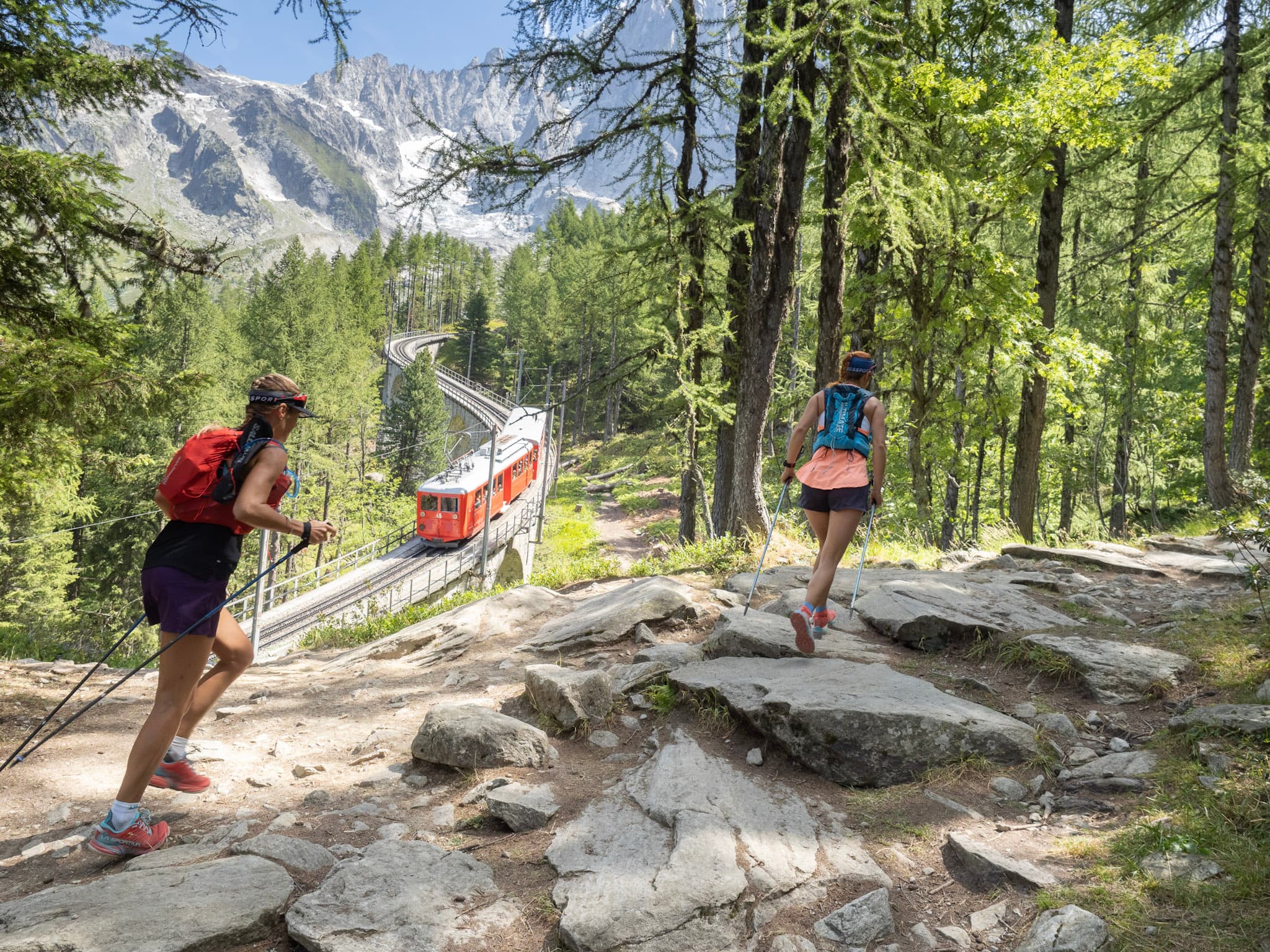
Running Trails and Riding the Rails in Chamonix
By Brian Metzler
Top photo: Dan Fitzgerald
For as long as I can remember, two of my absolute favorite things in life are running on scenic mountain trails and riding on trains.
Why? I think, it’s that both are a very simple recipe for an adventure, the notion that there’s a specific route going to a faraway place. In essence, perhaps both are about the freedom to escape and wander.
When I was a young boy watching trains head west near my home in suburban Chicago, I watched in awe and wondered where those trains might be going. As a teenager, when I started running trails, I was fascinated to discover a thrill that was entirely contrary to the finite feeling of running around a track.
As an adult, I’ve combined those two passions whenever possible, both in cities I’ve lived in and new places I’ve visited. While I’ve gone on self-contrived trains-to-trails escapades from New York City, London and Beijing, some of my most memorable experiences riding the rails and running have been a bit more off the beaten path.
One of my Colorado favorites involved riding my bike 40 miles from Boulder to Denver, hopping on a train to Winter Park, and running 48 miles over the mountains back to Boulder. Another memorable sojourn in Ireland entailed taking a train from Dublin to the coastal town of Greystones, and then running about 55 miles over three days back to Dublin along the Wicklow Way.
So how can you have these kinds of adventures in Chamonix, France?
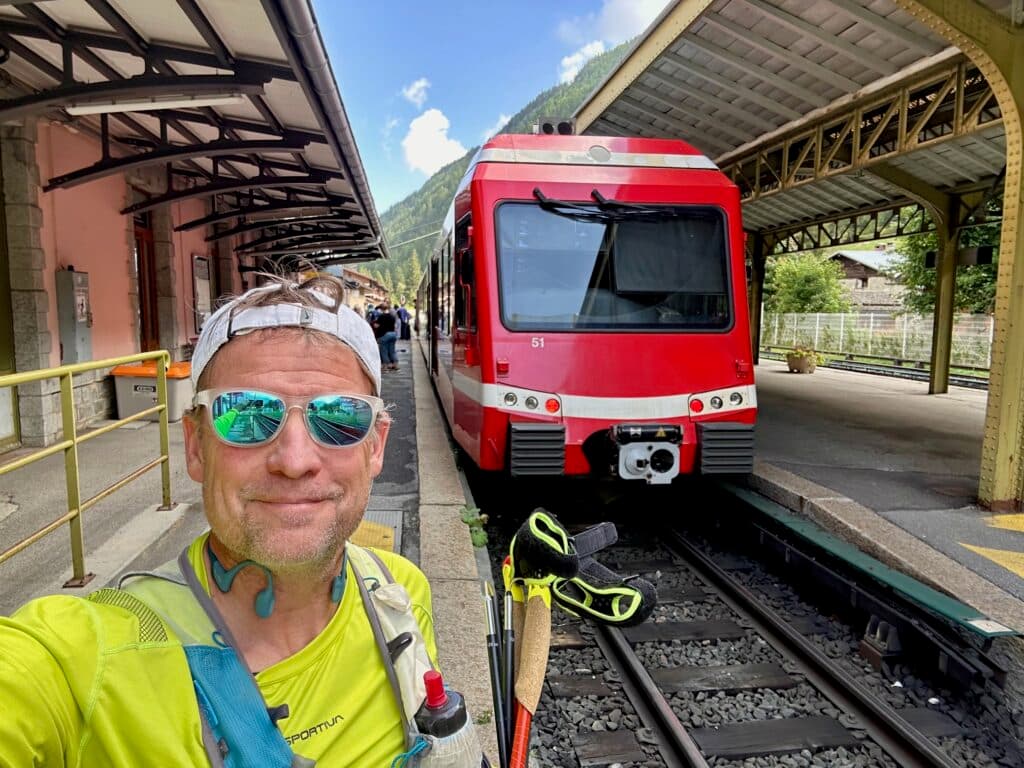
Rails to Trails in Chamonix
Every time I’m in Chamonix to run its amazing trails, I make plans to head to the train station on the southern edge of the city at least once.
Yes, it’s a move to get out of town, but mostly it’s a keen strategy to set up a run back to the city.
The Mont-Blanc Express, which operates between St. Gervais/Le Fayet, France, and Martigny, Switzerland, is one of the most scenic train routes in all of Europe. But unless you’ve taken the train to Chamonix, you might be only vaguely aware of the railroad that runs through town and have no idea where it goes.
Starting in St. Gervais/Le Fayet, it climbs through the bottom of the Chamonix valley, passing through Les Houches, Chamonix and Argentière, before passing under the Col des Montets on the way down to Vallorcine. From there it climbs upward into Switzerland and traverses a high-alpine route before descending into the city of Martigny. There are dozens of trailheads adjacent to the train stations along the line, and with a little planning, that means you can create numerous point-to-point runs back to Chamonix.
Here are a few of my favorite trail running adventures that involve train rides in and around Chamonix.

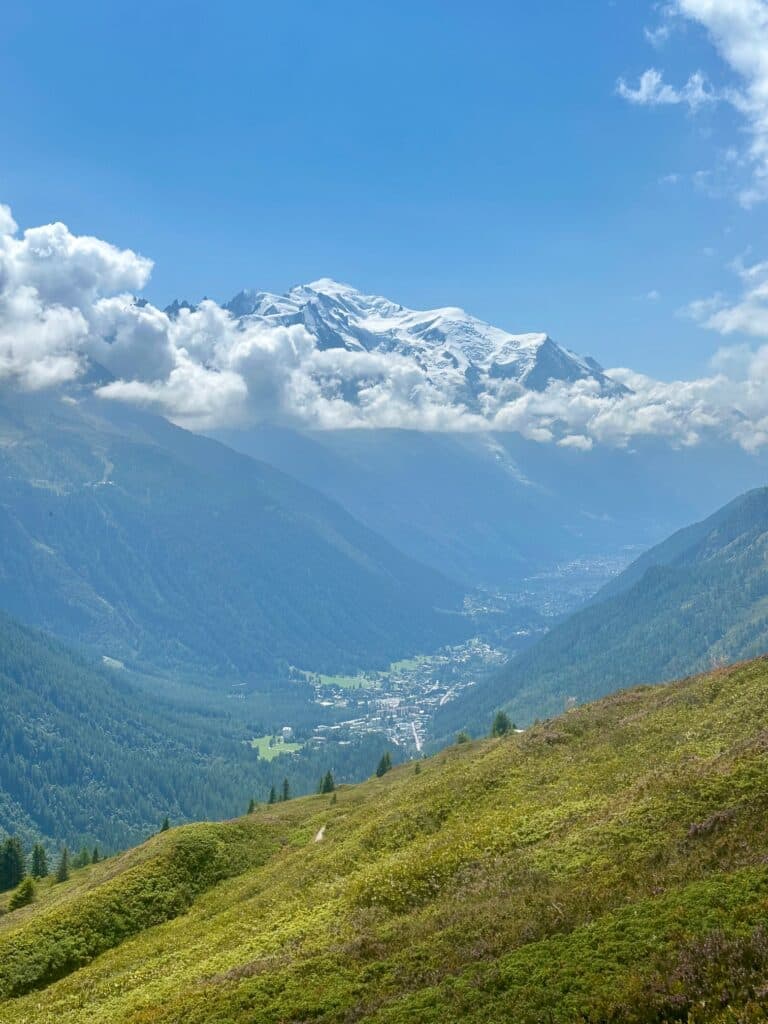
Train Ride and Run #1: Chamonix to Vallorcine and back
After an easy, 30-minute northeast-bound train ride to Vallorcine, you emerge at the summer slopes of a small ski area along the Ultra-Trail du Mont-Blanc (UTMB) course and variant route of the Tour du Mont-Blanc trail. From there, there are a couple of options to run back to Chamonix, but I typically backtrack a short section of the UTMB course and then zig-zag my way up to the top of the ski runs near the crest of Col de Balme, a 2,195-meter (7,200-foot) mountain pass on the French–Swiss border. As you gain altitude, the landscape opens up, revealing sweeping views of the Trient Valley behind you and the towering Mont Blanc massif ahead.
Once you’ve crested the top of the pass, you’re rewarded with a classic panorama: the jagged Aiguilles of Chamonix and the glaciers of Mont Blanc dominate the horizon. Many trail runners and hikers pause there to soak in the views (and perhaps grab a refreshment at the seasonal refuge) before beginning the descent on one of numerous routes that head toward Montroc and Argentiere.
From the Col de Balme, the routes wind down along alpine ridges and pastures, with varied options depending on your pace and preference. You can follow the balcony paths that traverse above Le Tour and Argentière, or take more direct trails through the valley forests. Either way, the journey eventually brings you back into Chamonix, completing a spectacular 24km (15-mile) point-to-point run that combines high-mountain scenery with classic alpine charm.
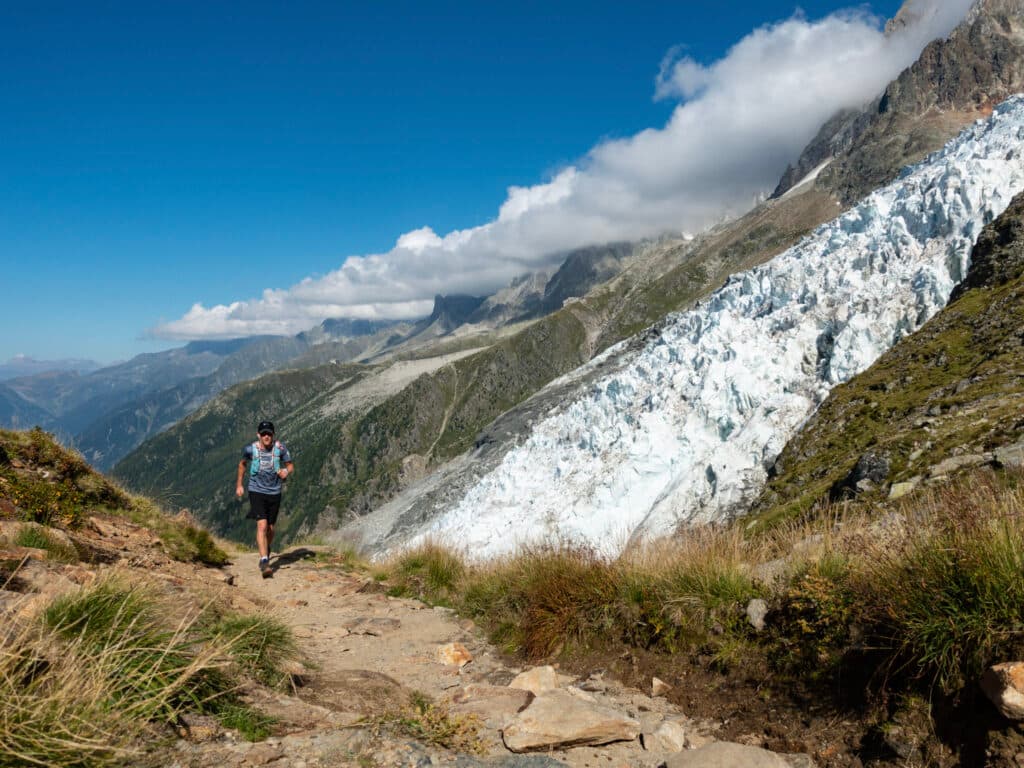
Train Ride #2: Chamonix to Les Houches and back
This 30-minute train ride to the southwest takes you to the downvalley ski town of Les Houches. From the train station, cross the highway and pass through the town to pick up Chem des Longues and traverse the trails across the Griaz, Bourgeat, and Taconnaz glacial drainages as you meander along Montagne de Taconnaz.
From there, you can hike up to La Jonction for an up-close view of the lower flanks of the Bossons Glacier, or you can meander down to the Bossons village, across to the Cascade du Dard waterfall and then up to Refuge du Plan de l’Aiguille or down to Chamonix near the base of the Aiguille du Midi tram.
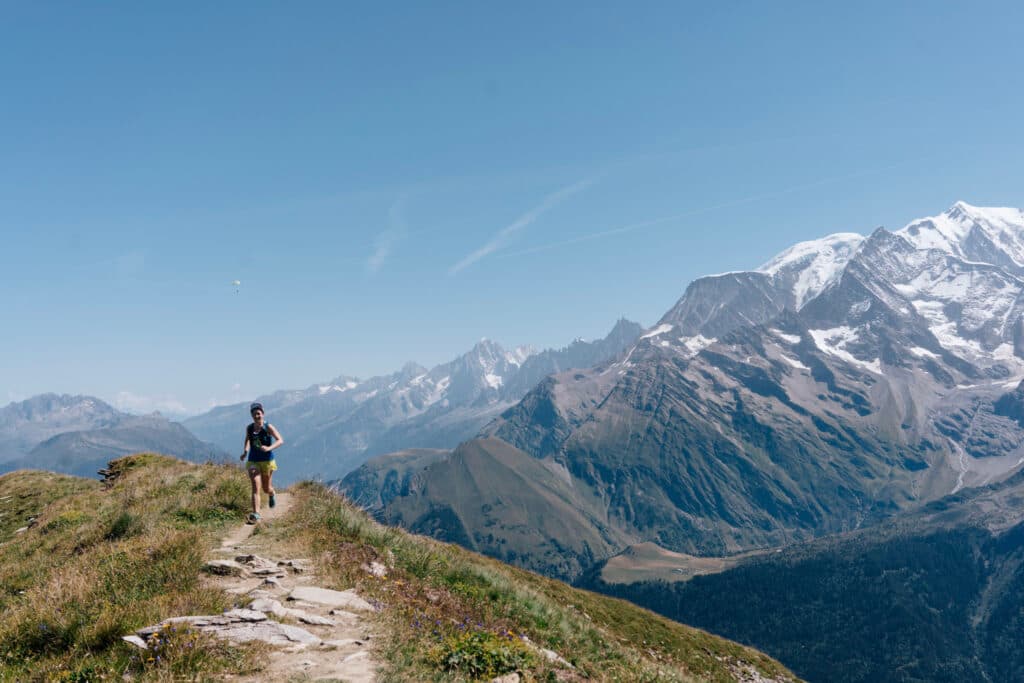
Train Ride #3: Chamonix to St. Gervais and back
Although this westbound train ride is slightly longer—about 45 minutes—it offers longer options for running back to Chamonix. The Mont-Blanc Express train station is near the valley floor in Saint-Gervais-les-Bains-Le Fayet, and to start most of the routes requires a 20-minute run up the Chem. de Font Froide dirt path to the upper part of the village.
From there, you can pick one of several different trails with varying degrees of ruggedness that wind their way about 20km (12.5 miles) to Les Hoches. The one I have taken goes from St. Gervais-les-Bains, up and over Col de la Forclaz, and down into Les Houches, somewhat following the UTMB course in reverse.
Leaving St Gervais-les-Bains, the trail climbs steadily through woodland and alpine pastures, offering glimpses back toward the Arve valley. The path makes its way up toward the Col de la Forclaz (not to be confused with the higher Swiss pass of the same name), a traditional crossing point between valleys. From here, wide-open views stretch across to the Mont Blanc massif, with the rounded summit of Mont Joly to the south and the rocky spires above Les Contamines to the southwest also in sight.
After a rest at the col, the descent begins on winding paths that lead through mountain meadows that are dotted with wildflowers and grazing cattle in summer. As you drop lower, the scenery shifts to shady forests, and the trail gradually works its way down into Les Houches in the eastern edge of the Chamonix valley.
One of the alternate routes on my list for my next trip to Chamonix includes taking another train in St. Gervais, the Tramway du Mont-Blanc, and riding it up to the 6,600-foot summit of Mont Lachat, and then running down into Les Houches. Still another option could be taking a 35-minute train ride from Chamonix to Chedde (about 3km before reaching Saint-Gervais-les-Bains-Le Fayet) and heading northeast out of town to connect trails past the Gorges de la Diosaz, through the Carlaveyron Nature Reserve, and on to Refuge Bellachat, before dropping back down into Chamonix.
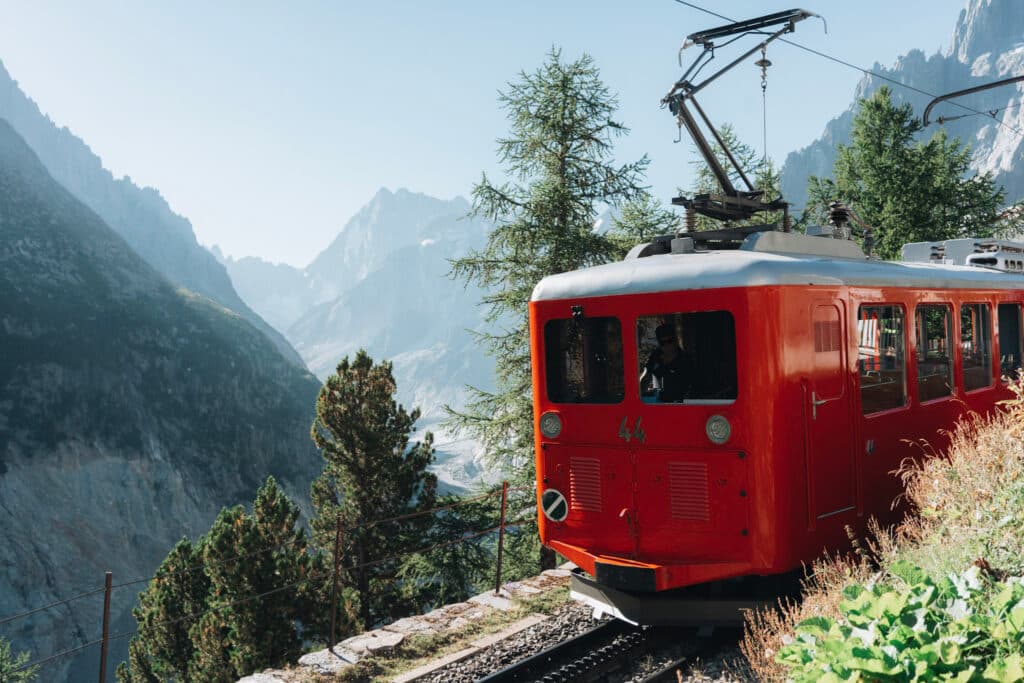
More Options
Depending on how long you want to run or what kind of scenery you want to see, you can create numerous other running routes off the train.
That could include 1) taking the train from Chamonix to Martigny and running the 40km (24-mile) route of the UTMB’s Martigny-Combe to Chamonix (MCC) race; 2) taking the train from Chamonix to Le Buet (the stop before Vallorcine) and running back to Chamonix via Col des Montets; 3) taking the Montenvers Railway to the base of the Mer de Glace and then running southwest on the Balcon Nord to Refuge du Plan de l’Aiguille and Bossons Glacier and back to Chamonix, or 4) taking the Plan Plaz gondola from Chamonix and then the Le Brévent tram to run around Pointe de Lapaz and other high points above Les Houches all the way to Saint-Gervais-les-Bains-Le Fayet before taking the train back to Chamonix.
With a rail line through the center of the valley, the potential for unique runs is limitless, even if that means relying on the train as a last resort option to get back to the village when you’ve run too far. The point is, the rail system opens up even more opportunities to create interesting routes, see more with point-to-point excursions, and extend your running adventures further off the beaten tracks closest to the city center.
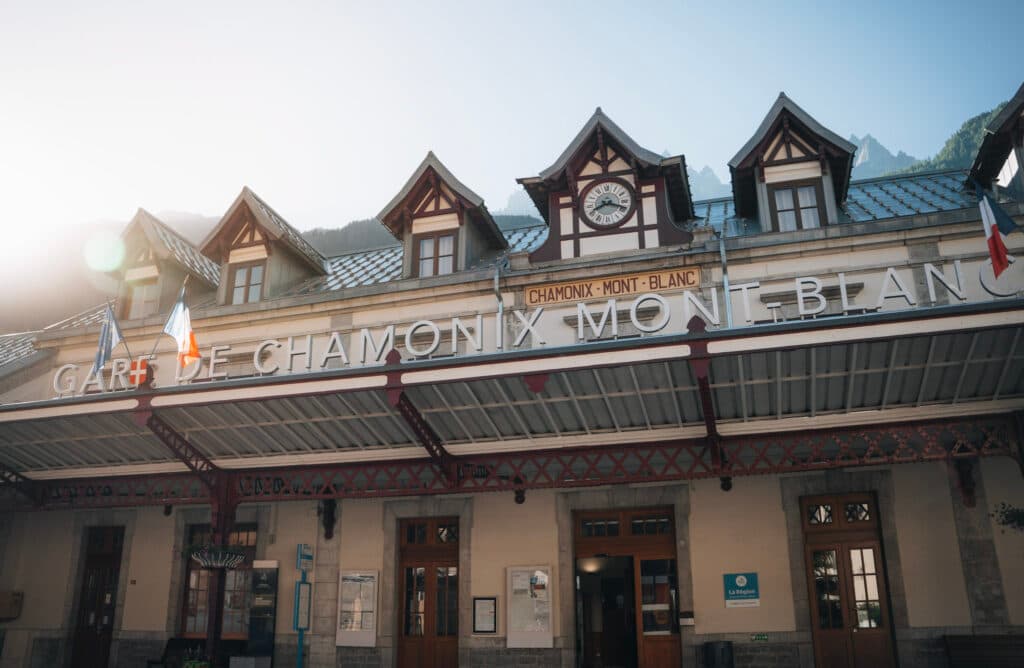
How to ride the train in the Chamonix Valley
The Mont-Blanc Express runs year-round, generally from 7h-20h. Trains run once per hour or every half-hour during popular travel times. See the timetable which changes by the season.
Many hotels in the Alps will issue you a guest card when you arrive, called a carte d’hôte. In Chamonix, present this card for free access to the Mont-Blanc Express SNCF trains in the valley between Vallorcine and Servos. Extending beyond those towns, you’ll need to purchase a ticket online or at the main station if traveling within France. For international travel on the Mont-Blanc Express between Chamonix, France and Martigny, Switzerland, you can purchase a ticket online through the Swiss SBB.
Mont-Blanc Express train line
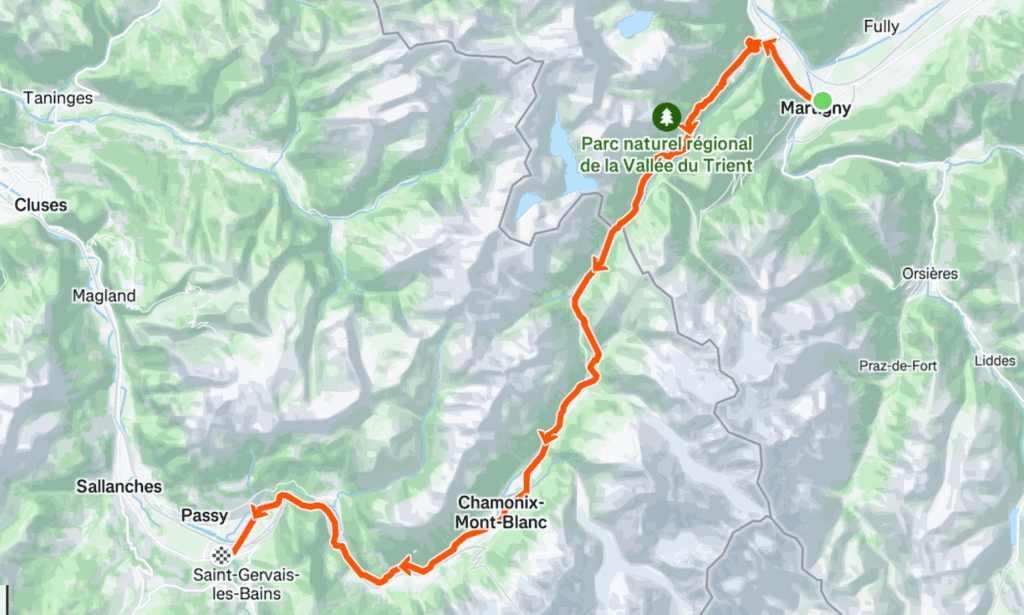
This is the train line between Martigny, Switzerland and St. Gervais/Le Fayet, France. Visit Run the Alps’ Strava to see trails accessible from stops along the Mont-Blanc Express.
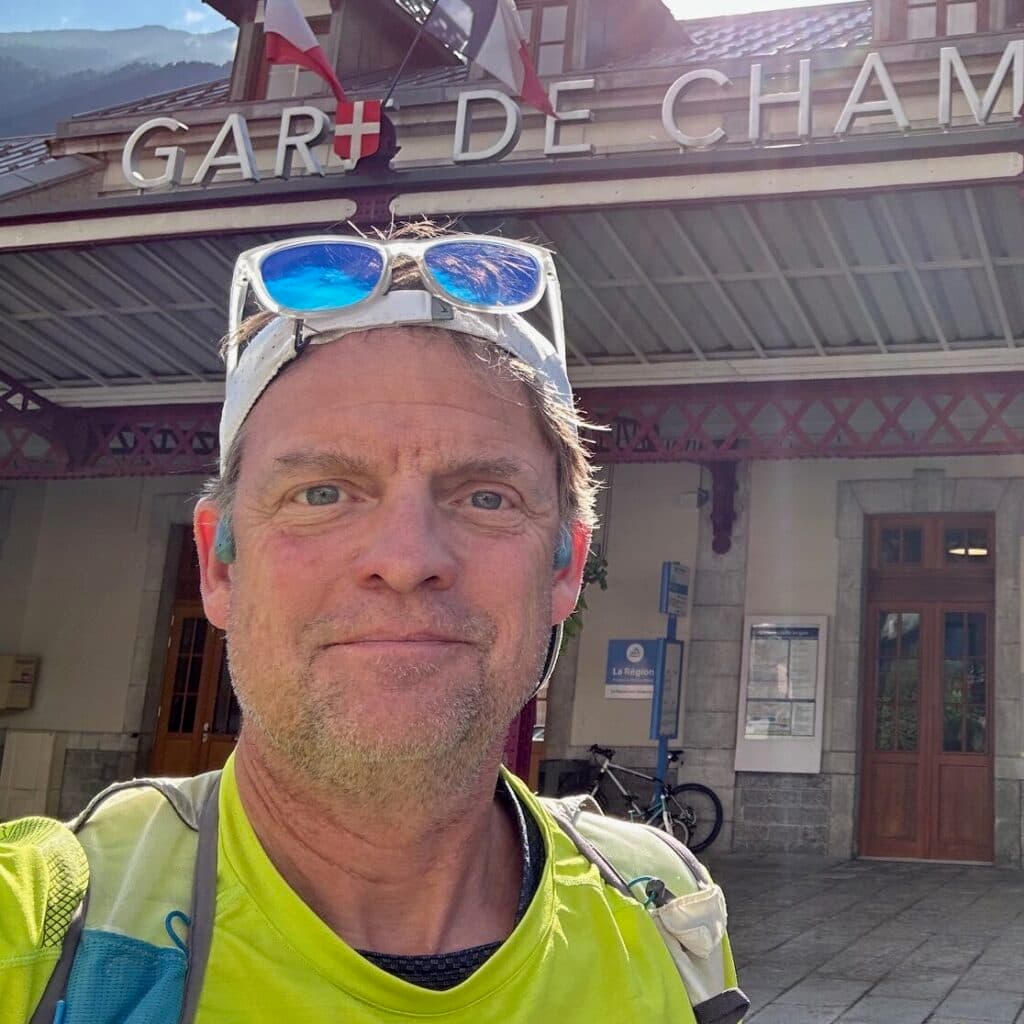
Brian Metzler is an Award-winning writer, author, runner, skier, Leadman, Ironman, burro racer, proud dad, running shoe geek, train enthusiast based in Boulder/Leadville. He was the founding editor of Trail Runner Magazine, a longtime gear tester, and is currently the Director of Content and Media at UltraSignup. Read more of his articles here.